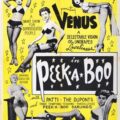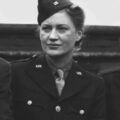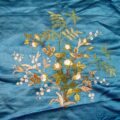Womens fashion 1920s
June 9, 2016Womens fashion 1920s and the Jazz Age; The Roaring Twenties. The names for this decade conjure a time of almost relentless fun and progress. And with good reason: The Golden Age that preceded it had been so abruptly interrupted by the war, but it too was characterised by an aura of gaiety and decadence – the resumption of frivolities was in some ways not in spite of the cruelty and suffering that the people of Britain had undergone in the intervening five years but because of it. There was a determination to both live life to the full and to rush onwards into modernity, in the process embracing simpler fashions and more complicated technology. Womens fashion 1920s was profoundly affected by this atmosphere.
Obviously it was still only for the privileged to rush around in motor cars and dance the night away in nightclubs in knee length dresses hand sewn with shimmering glass beads, aided by the very fashionable drug, cocaine. To relax, the upper classes liked to partake of a little opium, both of which, although nominally illegal, were easily available. The fashions and lifestyles of the 1920s were youth driven, just as much as the 1960s, but like the ‘60s where the fashionable youth innovated the rest of the country (mostly) followed.
Womens fashion in the 1920s and home dress making
But the number of people who could afford these privileges was growing and now it was not just the upper class elite who were regularly able to have brand new clothes, but the middle classes too.
Home dress making had always been popular but now more and more homes had a sewing machine which made the process of making clothes at home much faster, and along with the simpler shapes now fashionable and smaller amount of fabric needed for them women didn’t need fiendish sewing skills or deep pockets to run up a fashionable outfit or two.
The same applied to mass manufacturing – clothing factories had been around for a while, but again these clothes that were quicker, simpler and less costly to produce meant that they could be churned out in great quantities at a lesser cost for the buyer. Add to that the rise of artificial fibres like Art Silk and Rayon, designed to imitate silk, and womens fashion 1920 starts to look like a recognisable predecessor of our own high street clothes – in most cases neither incredibly complicated, made to last, or in good quality fabrics but fun, easy to wear, up to the minute and above all bright and shiny new.
A range of cheap shops sprang up, like Woolworths, one of the first chain stores, which supplied everything from sewing thread to patterns to children’s clothes, underwear and various bits and bobs for the house at rock bottom prices. Only the poorest now needed to rely on the second hand market or in dire cases, the rag man.
Freedom and Womens fashion 1920s
Womens fashion 1920 was not just a case of one design of dress for the whole decade, i.e. the sleeveless, waistless beaded flapper dress that probably springs to mind when you think of the 1920s. Vogue recently ran a piece that suggested that the style of any age only becomes iconic and recognisable towards the middle of the decade – the hinge of the decade, Vogue called it. And that’s the case with the 1920s.
Overall the mood of womens fashion 1920 was simpler, freer and less restrictive than what has gone before. Perhaps this was in part because of the freedoms many (but not all) women experienced during the war, climbing into overalls to work in factories before being unceremoniously fired when the men came home, and running their own affairs as well as the need for outfits that let them dance freely (but women had worked, danced and managed households and money before, all while wearing layers of clothes and corsets). Perhaps it was simply the whims of the designers, like Chanel who personally suited the new silhouette and exemplified the modern woman. In any case tight, fussy clothing was out.
The silhouette in Womens fashion 1920s
Right at the beginning of the decade, the overall silhouette was tubular or slightly barrel shaped, that is, with skirts gently curving inwards at the waist, flaring out at about hip length and then back in again towards the knee.
Looking at womens fashion 1920 you will see skirt lengths of anything to just above the ankle to just below the knee, according to the occasion. For daywear skirts were calf length rising higher as the decade progresses, and though to begin with it was younger women wearing these fashions – those daring flappers – by the mid-twenties most women of all ages had embraced the knee length skirt. It was the shortest that skirts had ever been on adult women. But some middle aged and older women, like Queen Mary, never accepted the new fashions, preferring to continue with the floor length gowns they were used to.
Daring evening dresses
Even the most daring evening dresses were never overtly above the knee, but plenty had layers, fringing and slashes that would have revealed lots of thigh while dancing. Typical was a thigh length underskirt that was surmounted by beautiful heavy beaded fringes reaching to the knee that would have moved freely, twinkling under evening lights. By the end of the decade designers were experimenting with dipped hems, short at front and back and long at the sides, or long at the back and short at the front and sides. Handkerchief hems offered a pretty, fluttering effect.
Just as shocking as the legs on show were the bare arms. Up till then arms had always been covered even in the hottest summer months and in the most vigorous tennis matches – shock and disapproval was expressed when some professional female tennis players dared to roll their sleeves up to the elbow.
Waistlines
The waistline was initially dropped to hip length, rising to more like the natural waist by the end of the decade. The simple tunic shape provided a good canvas for bold prints and embroideries. The early 1920s saw a vogue for Russian and Eastern European peasant style embroidery.
Underwear in Womens 1920s fashion
These simple shapes demanded a new type of underwear. For those not naturally endowed with a boyish, athletic figure, in came bandeau bras which flattened big busts, and girdles to squash down the waist and hips. Those who still wore corsets found that fashionable ones weren’t designed to pinch the waist in for an hourglass figure as previously, but flatten the tummy, hips and bottom. French or cami-knickers became popular, shorter than the former almost knee length knickers so that they wouldn’t be seen underneath new short dresses, and stockings were silk or artificial silk, held up with suspenders attached to the girdles or stays, or rolled down to just above the knee for those irrepressible dancing girls.
Womens fashion 1920s and the Garçonne
The logical extension of this boyish look was the Garçonne, who took boyishness even further with undecorated blouses worn with a tightly knotted tie and fitted jacket, simple knee length skirt, almost a pencil skirt, or even trousers, and hair as short as a schoolboy’s, called the Eton Crop after the private boy’s school of the same name. To this style they added feminine touches, like lipstick or a cloche hat, because the intention wasn’t to be mistaken for a boy but to have some of his freedoms.
Womens fashion 1920s – the picture dress
And then on the other hand there was Jeanne Lanvin’s picture dresses. She designed very feminine dresses meant for evening wear or special occasions with full, knee length skirts. In fact they remind me of a fitted Fifties style dress, but instead of perky A line skirts these ones, though held up with underskirts, have a drooping effect and are sometimes held from the waist and sometimes from the hips. They are very whimsical and picturesque, perhaps hence the name, made in silks, chiffons and organzas with pretty embroidery and silk roses. The shape was never translated into daywear.
Womens fashion 1920s – hairstyles
I have already mentioned the Eton Crop, but of course the decade is known for the bob, jaw length and sharp. It too was not really embraced by all until about the middle of the decade. You could also keep your hair long and fold it under into a kind of faux bob, with a bun at the back, or go halfway with the sides cut to bob length, shaped into kiss curls on the cheeks, and the length intact at the back, again wound into a bun. The bob came in many varieties, parted in the middle or to the sides, with a fringe or not, waved or straight.
Hats
This very sleek hair, tight to the head made the most memorable hat of the age possible. The cloche hat was so close to the head and pulled down so far over the eyes I don’t quite know how women could see. But there were also a wide variety of other brims, still with the same pulled-down-to-the-brows style. Tiny, creative asymmetric cocktail hats were also appearing. All of these styles were worn with gloves.










